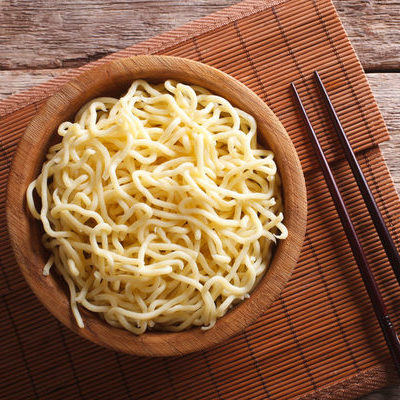
Noodles
What are noodles?
Asian noodles can be made from wheat or other grains. Traditionally, wheat flour is mixed with water and salt, into a dough. Rolled out, cut, and stretched to make long strips or strings. These can be used fresh or dried and stored for later use. This have to be cooked in boiling water before consumption. The following are popular types of Asian noodles:
- Ramen 6. Glass noodles (mung bean)
- Rice vermicelli 7. Sweet potato noodles
- Udon 8. Yellow (alkaline noodles)
- Lo mein or Chow mein 9. Soba
- Chow fun or Pad thai (flat rice noodles)
This is very popular around the world in its different forms, including noodles made of rice, buckwheat, acorn flour, and other ingredients.
Origin
Undisputedly, this originated in China. There is archaeological evidence to suggest that the Chinese were making it as far back as 4000 years ago. There is a gap after that when it was recorded as a food during the Han dynasty period about 2,000 years ago.
Noodle / pasta records show up in Europe around 600 AD and appear to have developed parallel and unrelated to the Chinese. Though there is a school of thought that attributes pasta to Marco Polo bringing it back from his Chinese travels, a contradictory idea holds that pasta already existed in ancient Rome and was known as ‘lagane’. Pasta-making implements from the 4th century BC have been unearthed in Rome. A third contention is that it originated in Arab lands and then influenced Europe.
However, it is certain that countries like Japan, Vietnam, and Korea adopted this from China.
Instant noodle was first introduced in 1958 in Japan by Momofuku Ando. Cup noodles came to the fore in 1974.
Nutrition
The primary reason for eating this is that it is extremely versatile and can be adapted to different cuisines and tastes. There are different ways to prepare it, each of them with different nutrition levels. This is also made of different ingredients.
- Wheat: As most are wheat-based, they must be avoided by those with a gluten allergy. It is also healthier to have whole-wheat rather than refined. Whole grain noodle is a good source of fiber, manganese, selenium, copper, and phosphorus.
- Kelp: this is made of kelp are healthy, full of calcium, magnesium, iron, and vitamin K.
- Shirataki: shirataki noodles are another type made from yam flour, which is filled with fiber and low in carbohydrates and calories.
- Glass noodles: typically made of mung bean, this is a great source of protein, iron, and zinc.
- Soba noodles: these are made of buckwheat and are very popular in Japan. They are rich in manganese and thiamine and help in controlling blood sugar and cholesterol levels.
- Rice: this noodle is made of rice and have a fairly high glycemic index, though they are lower in calories than wheat.
Commercial noodles
Most are produced commercially, though hand-made ones are also available. Instant noodle is a commercial product that are pre-cooked, dehydrated, and packaged along with flavoring powder. This is a more convenient way to make it and is extremely popular throughout the world. However, this contains a high level of sodium, tertiary-butyl hydroquinone (TBHQ), and monosodium glutamate (MSG) are unhealthy.
Noodle recipes
FDA regulations
The FDA classifies noodle and noodle products as a product made from semolina, durum flour, farina, or flour along with eggs. These products are regulated strictly in the US for the seasonings, salt, gluten content, glyceryl monostearate, etc. The finished product must be at least 87% solid. The labeling of these products must include these specifications clearly.
References
John Roach, 4,000-Year-Old Noodle Found in China https://www.nationalgeographic.com/news/2005/10/4-000-year-old-noodles-found-in-china/
Mehra, Sehr, Tracing the Origins of the Noodle
https://scholarblogs.emory.edu/noodles/2018/07/08/tracing-the-origins-of-the-noodle/
Kitchen, Leanne, Know your noodle: The ultimate guide to Asian noodles
https://www.sbs.com.au/food/article/2016/07/28/know-your-noodle-ultimate-guide-asian-noodles
